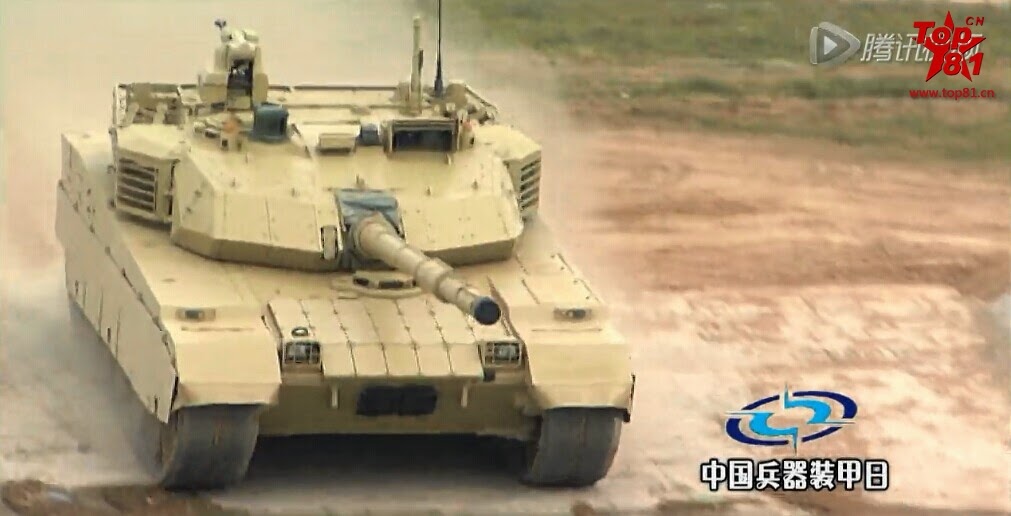


In line with its increasingly sophisticated domestic arsenal, China’s arms exports have become much more technically competitive in the last 10 years; the 2015 U.S. Defense Department’s Annual Report on the PLA even stated that China’s ground systems in particular are globally competitive or nearly globally competitive. With selling points of low cost and affordable service, lack of geopolitical strings and upgrade packages, China has become the world’s third largest arms exporter behind the US and Russia. With a series of recent contracting wins against Russian firms, it looks to expand its market share.

In April 2016, Turkmen state TV showed footage of the Turkmen military firing its new FD-2000 long-range surface to air missile (SAM) during military maneuvers. The FD-2000, the export version of the HQ-9, is distinguished from its domestic sibling by its hexagonal missile canisters. The latest FD-2000 likely has similar performance to the HQ-9’s 200km range and 30km flight ceiling, with capability against both aircraft and ballistic missiles. Footage of the same exercise also showed that Turkmenistan has the medium-ranged HQ-12 SAM as well.

While Turkmenistan’s military arsenal is still largely Soviet-era Russian weaponry, the major purchase of strategic Chinese air defense missiles despite the ubiquitous availability of similar Russian systems suggests that Turkmenistan is looking to diversify its defense purchases. Such a move could be driven by unease over Russian activities in Ukraine, as well as China becoming the largest customer of Turkmen natural gas. China’s increased economic clout in Central Asia is clearly giving it the ability to smooth over negative Russian reactions to a similar increase in Chinese security clout.

In an even more high profile victory, Kazakhstan has chosen to purchase Pterodactyl WJ-1 unmanned aerial vehicles (UAVs). Shown on Kazakh state television, the Pterodactyl was displayed during a Kazakh Air Force open house without weapons, but already equipped with two wing-mounted pylons for anti-tank missiles and small bombs. Built by the Chengdu Aviation Industries Group, the Pterodactyl can carry a payload of 200kg and a powerful camera turret. Given American export restrictions on armed UAVs, and Russia’s inability to produce such drones, China is the logical provider for Kazakhstan’s unmanned combat needs.

Kazakhstan’s larger security strategy involves balancing Russian influence with other foreign countries, like America, China, South Korea and Turkey. In addition to massive Chinese investment, Astana and Beijing both share similar concerns over Islamist militancy, and a wariness over Russia’s use of “little green men” in the Ukrainian conflict.
Over in Thailand, the Norinco VT-4 main battle tank (MBT) defeated the Russian T-90 MBT for a $150 million, 28 tank contract for the Royal Thai Army (RTA). If satisfied, the RTA will exercise an option to purchase another 153 VT-4 MBTs. While such a victory may not be such a surprise given that Thailand’s two major allies are the United States and China, the RTA has clearly judged the VT-4 to be at least technologically equal to the T-90. The VT-4 is a 53 ton MBT, sharing many technologies such as armor and fire control with the larger ZTZ-99A, China’s largest and best tank. Norinco’s victory may also be in part due to Thailand’s government wishing to solidify security and economic ties with China, though Bangkok has also made a recent effort to improve ties with Russia. China’s ability to keep its share of the Thai weapons market in spite of competitive Russian offerings suggests that the Chinese armor industry is addressing historical weaknesses in propulsion, fire control, and protection.

The story of China’s growing wins in arms exports is as much about the technology itself as increased economic ties and geopolitical considerations. Both buyer and seller take these into consideration when striking a deal. In turn, the sales can then deepen relationships, as buying weapons also means buying training, upgrades, and technical support over the long term.
You may also be interested in:
For Sale: The Next Generation of Chinese War Robots
China Shows Off its Growing Drone Fleet
China Raises the Red Banner in the South China Seas: HQ-9 Long-Range SAM at Woody Island
What New Chinese Weapons Will We See at This Year’s Zhuhai Airshow?
